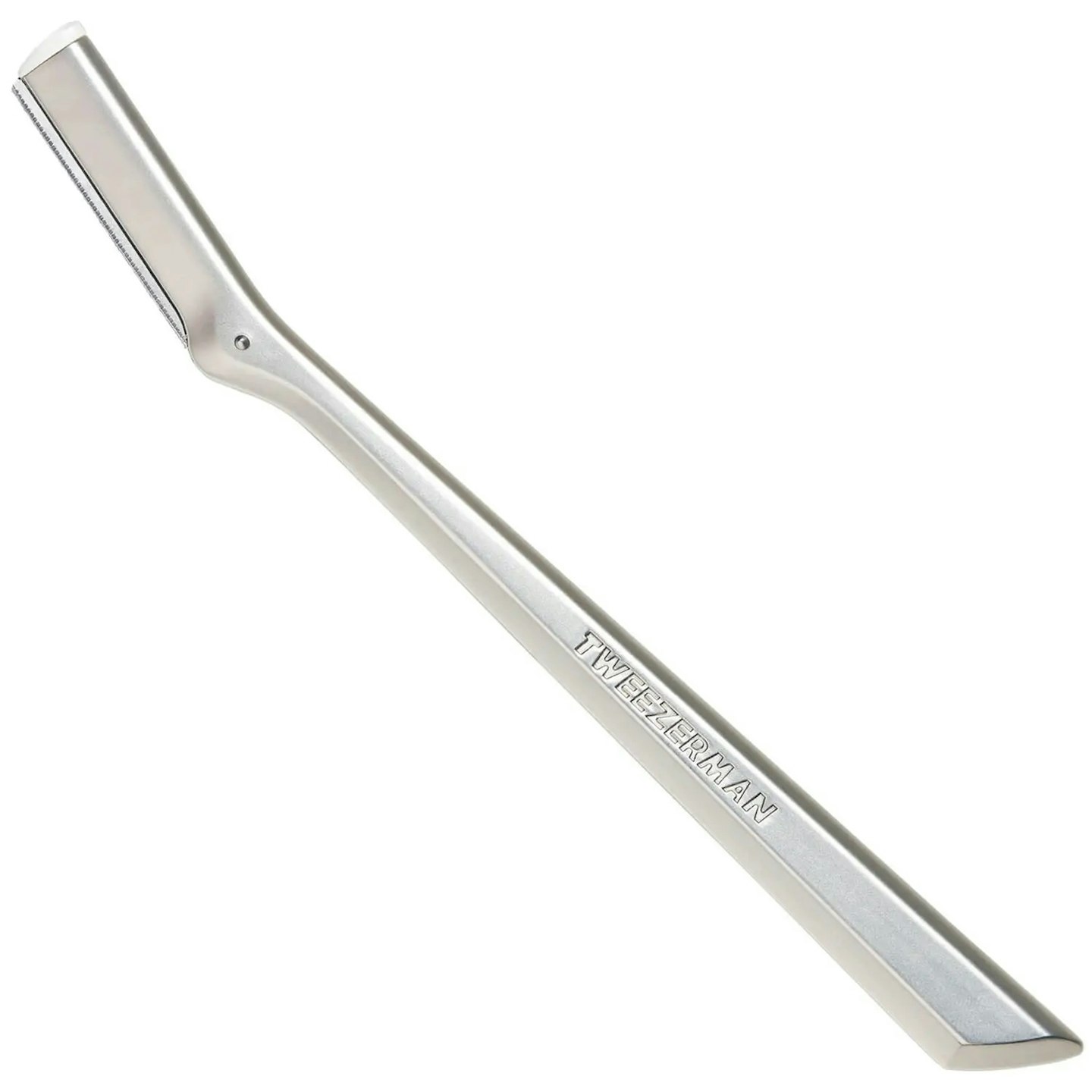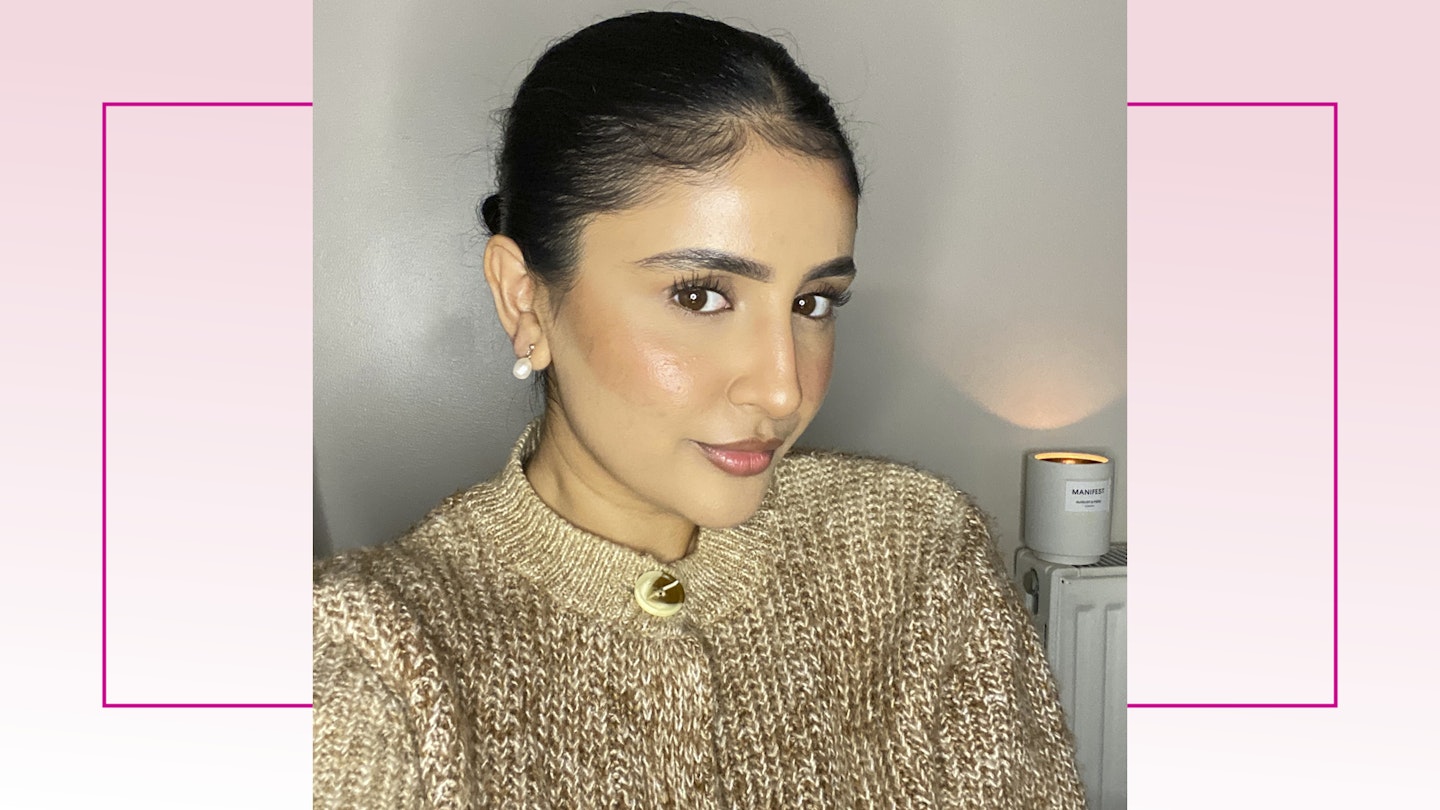I can pinpoint the exact moment I became conscious of my facial hair. I was 13 years old and my older sister was getting married. I decided - with the help of my aunts and cousins - to mark the occasion in the only way that seemed right: getting my eyebrows threaded for the first time. It was a painful and exciting coming of age moment, but the thrill was short lived when I started to receive comments about my new two-toned forehead. It may be funny now, but at the time realising that groomed eyebrows created shadows in untreated areas left me mortified. And so, for the next 16 years, hair lightening or hair bleaching became my best friend. That is, until dermaplaning came along.
For anyone unfamiliar with the category of hair lightening products on the market, the concept may seem a little extreme – bleaching? Your face? Why! But if you're South Asian like me or generally blessed with thick hair all over – it's a dance we know all too well. In my Pakistani home, Jolen Creme Bleach, £4.40, is a household name, in fact it's so popular many older-generation South Asian women endearingly refer to any hair lightener under the sun as 'Jolen'.
For those of us who have never considered facial hair our MO, hair lightning treatments are something we've come to rely on to maintain it, whether it's spot treating side-burns, upper lips or doing the full whack (my personal fave). While it's great at masking the hair, me and my friends have also come to love it for the glow it leaves behind (hair becomes golden when treated) and how flawlessly it sits under make-up.
I'm 29 now and as satisfying as it has been to use Boots Smooth Care Hair Lightener, £5.69, every month for the past 16 years, I have finally taken the plunge and decided to remove my facial hair for good by way of laser hair removal. It's something I've wanted to do for a some time but the one barrier that has long held me back is the requirement of having to shave any area treated by lasers prior to and in between treatments.
Shaving my face always seemed a step too far, even with the growing popularity of dermaplaning and the backing it's received from beauty experts like Huda Kattan – who claims icons like Marilyn Monroe and Elizabeth Taylor were no stranger to the razor. But the switch flipped when premium laser specialist Debbie Thomas explained that a hair-free face could be the key to preventing future breakouts on my acne-prone skin.
It's all I needed to hear. Since then, I've signed up to a course of bespoke laser treatments at Debbie's D.Thomas Clinic in South Kensington, London, where each treatment begins with a round of face shaving. The four weeks in between treatments, where regrowth begins to emerge in stubborn areas, I've started to do the unthinkable and now shave my face to maintain smooth, hairless skin.
What is dermaplaning
Debbie explains, 'dermaplaining is using a modified razor to lightly exfoliate the skin leaving it smoother while removing facial hair at the same time. Removing the downy fluff on the face allows make-up to sit better and the skin looks brighter.'
How to shave your face at home
There's no denying it's a little scary at first, but arm yourself with the right method and tools, and it'll soon become second nature. It helps to know that dermaplaning either with a surgical scalpel or safe at-home face razor will help to remove unwanted peach fuzz, dead skin cells and boost your skin's glow – so, as Debbie explained, consider it the best exfoliation treatment you can do in the comfort of your own home.
Once you've chosen your blade (opt for a razor that is intended for at-home dermaplaning or facial hair removal specifically), begin with clean, dry skin. 'Firstly there should be no pain so if it's feeling uncomfortable you are likely pressing too hard,' Debbie notes.
'The skin should be taut, so use one hand to stretch the skin while you work over the face with light short strokes,' says Debbie. 'The strokes should be in the direction of the hair growth which is typically downward. Avoid any irritated, infected or wounded areas of skin until fully healed. After, apply a soothing product like aloe vera or better yet a barrier repair product to lock in moisture. Then, be gentle with your skin for 48hours (avoid scrubs, acids and excessive heat). Finally remember the SPF, when you exfoliate you remove some of the dead skin which, while making skin look dull, does offer a little sun protection so without this it is even more important than normal to slather on the SPF.
Will my hair grow back thicker if i shave?
It's a resounding 'no' from the experts, you'll be pleased to know. 'The downy hair is so fine that you won't really be able to feel any difference with it. However thicker hairs can feel a little prickly as it comes through. This is not because the hair grows back thick but rather because you have cut off the tapered end causing a blunt edge. As the hairs cycle is normally a matter of weeks, this blunted hair will die and fall out being replaced with a new tapered hair. Any hair above the skin is dead so cutting it has no effect on the hair growth.'
Shop: The best dermaplaning tool

www.lookfantastic.com
This pro tool will quickly and easily help shift hair and dead skin to allow deeper absorption of skincare products, all while helping make-up to sit flawlessly on the skin.

